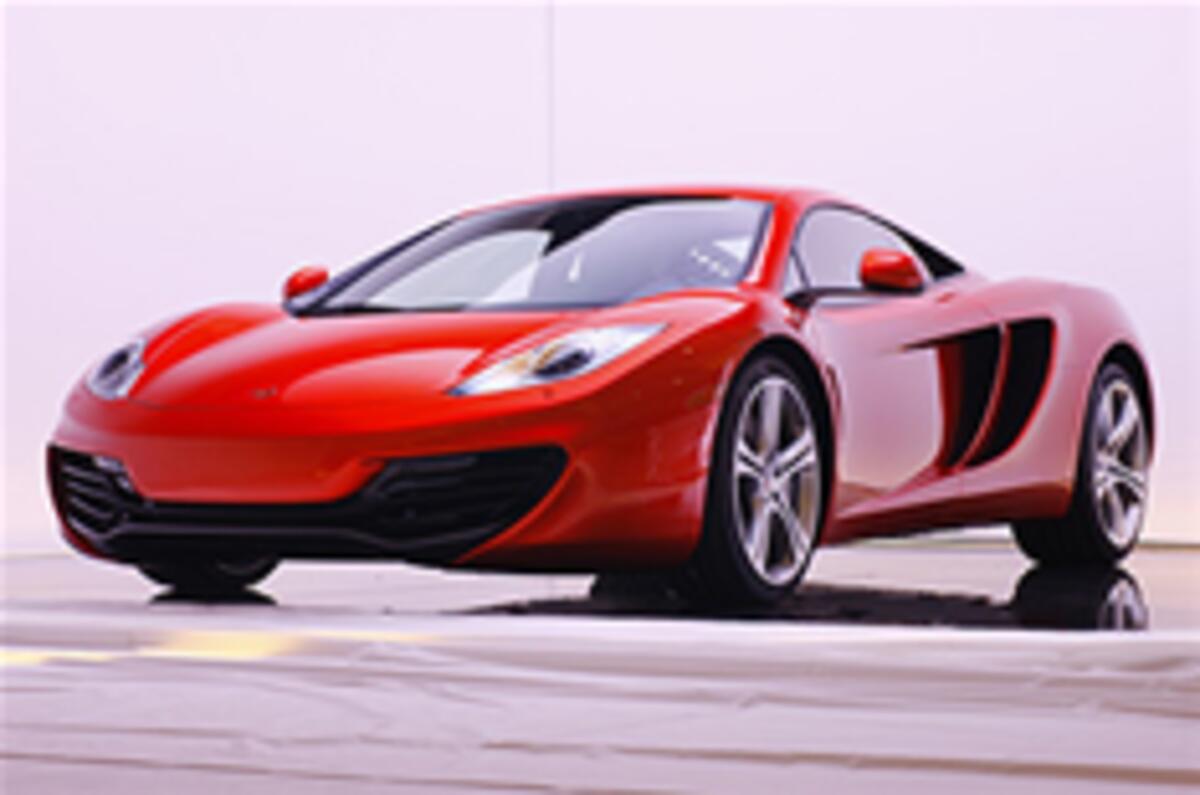This is the MP4-12C mid-engined supercar, which will go on sale sometime in 2011.
Its designation comes from three sources: ‘MP4’ because every McLaren grand prix car has used that designation since 1981, ‘12’ because that’s its efficiency coefficient according to a secret McLaren performance scale, and ‘C’ because the important bits are made from carbonfibre.
See Autocar's exclusive McLaren MP4-12C picture gallery
Download the McLaren MP4-12C wallpaper picture
See Autocar's exclusive McLaren MP4-12C video
Who is McLaren's MD Antony Sheriff?
Chas Hallett blog - inside the McLaren MP4-12C
John McIlroy blog - MP4-12C: subtle can be brilliant
The company intends to price the car towards the upper limit of the supercar segment at between £125,000 and £175,000, against rivals like the forthcoming Ferrari 458, the Lamborghini Gallardo and Aston Martin DB9.
Autocar’s Steve Cropley is your guide:
Design, engineering
Your first impression of the MP4-12C is that it’s a classy car with logical proportions and a near-perfect stance, but it’s far less spectacular than some rivals. That’s the whole idea, says design director Frank Stephenson.
He says in-your-face supercar styling can be “wearing and boorish” and risks becoming dated. “Great design looks relevant years later,” he says.
However, Stephenson and his team have resisted building any F1 family resemblance into the 12C. Instead, they have used the McLaren badge (team members call it “the McLaren tick”) in areas like radiator air scoops and headlight surrounds.
According to Stephenson, the 12C design has been led by a need for great aerodynamics.
The car is lower, shorter and narrower that all of its rivals, which makes it feel agile on the road and cuts its frontal area. The passengers have been moved closer together for the same purpose.
The front wings are shaped so their highest point is exactly above the contact patches of the front tyres, allowing the driver to place the car accurately on the road.





Join the debate
Add your comment
Re: McLaren MP4-12C revealed
er...."completely on paper" = complete misunderstanding! This is not a "concept car", or a "styling exercise" or a "teaser". This is the real thing, designed by McLaren (thankfully without Mercedes), built, driven, tested and currently undergoing tuning and sign-off. For real. Also a totally different proposition to the F1 which was a supreme technical exercise carried out outside of the normal business rules of cost and profit. The 12C has a strong enough business case in Ron's eyes to build a new factory at Woking, and you may have noticed in the past that Mr.Dennis doesn't do things on a whim.
There will already be some worried people at Maranello, & come 2011 they will have to be moving way ahead of their usual evolution game to compare.
Re: McLaren MP4-12C revealed
Not Ferrari, try Honda NSX, the rear deck is very NSX and the rest of the car is better conceived than the other look a like supercars, could it be that Mclaren have found some inspiration in perhaps changing how these type of car look, i think they might just have, don't you?
Re: McLaren MP4-12C revealed
Are you an engineer? I know they are clever these days and have made variable vane turbos etc, but how do they bend the laws of physics and match the immediate response of NA?